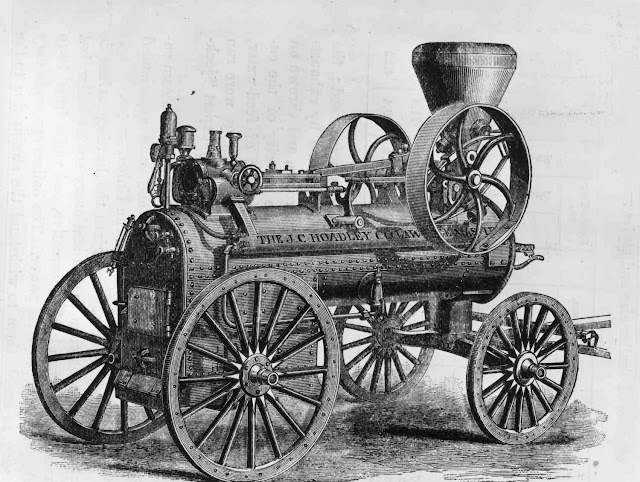🌍🔥⚡ From Fire to Fusion: Humanity's Energy Evolution Journey 🌟🔋💡
Energy is the heartbeat of civilization. From the crackling flames of early fires to the futuristic promise of nuclear fusion, our mastery of energy has determined the course of human progress. This is the story of how energy shaped our past, fuels our present, and holds the key to a sustainable future.
PART 1: The Past – Energy Sparks Civilization
1. The Discovery of Fire 🔥
Imagine a world where the only light came from the sun and the stars. Around 1.7 million years ago, early humans harnessed fire, an event that revolutionized their way of life.
- Cooking and Nutrition: Fire transformed raw, inedible food into a digestible and energy-rich diet, fueling the growth of our ancestors’ brains.
- Protection: Flames provided security against predators.
- Tool Creation: Fire hardened wooden tools, enabling early humans to hunt effectively.
Fun Fact: Archaeologists discovered evidence of controlled fire use in Wonderwerk Cave, South Africa, dating back over a million years.
2. Agrarian Energy: Harnessing Animals and Water 🌾💧
As humans transitioned to agriculture around 10,000 years ago, energy sources diversified.
- Animal Power: Oxen and horses plowed fields, enabling larger-scale farming.
- Water Wheels: Invented by the Greeks, water wheels converted flowing rivers into mechanical power.
These innovations laid the foundation for early civilizations like Mesopotamia, Egypt, and Rome.
3. The Age of Steam 🚂💨
The 18th century heralded a major breakthrough: the steam engine.
- Industrial Revolution: Factories, railroads, and ships became powered by coal-fed steam engines.
- Transportation: Steam engines revolutionized mobility, connecting cities and continents.
Interesting Fact: James Watt’s improvements to the steam engine made it so efficient that his name became synonymous with measuring power: the “watt.”
4. Fossil Fuels and the Rise of Electricity 🛢️⚡
The 19th and early 20th centuries saw the rise of fossil fuels: coal, oil, and natural gas.
- Coal Power: Fueled the industrial revolution and electrified cities.
- Oil and Gas: Became the backbone of global transportation.
- Electricity Revolution: Thomas Edison’s light bulb and Nikola Tesla’s alternating current system transformed how we lived.
Do You Know? The first oil well was drilled in Pennsylvania in 1859, marking the birth of the petroleum industry.
PART 2: The Present – The Renewable Energy Revolution
1. Solar Power: Harnessing the Sun 🌞
Solar panels, using photovoltaic cells, have become a cornerstone of renewable energy.
- Benefits: Zero emissions, abundant energy, and decreasing costs.
- Global Leaders: Countries like China and the U.S. dominate solar energy production.
Fun Fact: The world’s largest solar farm, the Bhadla Solar Park in India, spans over 14,000 acres!
2. Wind Power: Capturing Air Currents 🌬️
Modern wind turbines are marvels of engineering, generating electricity by converting wind energy.
- Efficiency: Wind turbines now generate electricity at costs competitive with fossil fuels.
- Largest Turbine: The Haliade-X wind turbine in Rotterdam can power 16,000 homes annually!
3. The Rise of Battery Storage 🔋
Advancements in energy storage are bridging the gap between energy production and consumption.
- Lithium-Ion Batteries: Used in everything from smartphones to electric cars.
- Grid-Scale Storage: Large batteries store excess energy for later use, ensuring a stable supply.
Interesting Fact: Tesla’s Gigafactory produces some of the largest lithium-ion batteries in the world.
4. Hydropower and Geothermal Energy 💧🌋
While traditional hydropower has been a staple for decades, geothermal energy is now gaining attention.
- Hydropower: Provides around 16% of the world’s electricity.
- Geothermal: Taps into the Earth’s heat to generate clean, consistent energy.
Do You Know? Iceland generates 25% of its electricity from geothermal sources!
PART 3: The Future – Fusion and Beyond
1. Nuclear Fusion: The Energy of the Stars 🌌
Fusion energy has the potential to provide limitless, clean energy by mimicking the processes of the sun.
- How It Works: Fusion combines hydrogen isotopes to release immense amounts of energy without harmful byproducts.
- Current Developments: The ITER project in France aims to produce more energy than it consumes by the 2030s.
Interesting Fact: One liter of seawater could theoretically provide as much energy as 300 liters of gasoline using fusion technology.
2. Decentralized Energy Grids 🌐
Future energy systems may rely on localized microgrids:
- Benefits: Reduced transmission losses, resilience during natural disasters, and community-level control.
- Smart Grids: Enabled by AI and IoT, smart grids optimize energy distribution in real-time.
3. Advanced Materials: Superconductors and Beyond 🧪
Breakthroughs in material science could revolutionize energy transmission:
- Superconductors: Allow electricity to flow without resistance, reducing energy loss.
- Nanomaterials: Enhance battery capacity and efficiency.
Energy Milestones Timeline 🕒
| Year | Milestone | Impact |
|---|---|---|
| 1.7M years ago | Discovery of fire | First controlled energy source |
| 10,000 BCE | Agricultural tools and animal power | Enabled the rise of civilizations |
| 18th century | Steam engine | Powered the Industrial Revolution |
| 19th century | Fossil fuels | Electrification and transportation boom |
| 20th century | Renewable energy | Began the transition to sustainability |
| 21st century | Nuclear fusion | Potential for limitless, clean energy |
Did You Know? 🌟
- The world consumes over 580 million terajoules of energy annually.
- A single wind turbine can prevent 1,500 tons of carbon dioxide emissions per year.
- Nuclear fusion releases 4 million times more energy per kilogram of fuel than coal!
Energy is more than fuel; it’s the force behind progress. Humanity’s ability to innovate, adapt, and harness new energy sources will determine the fate of our planet.























No comments:
Post a Comment